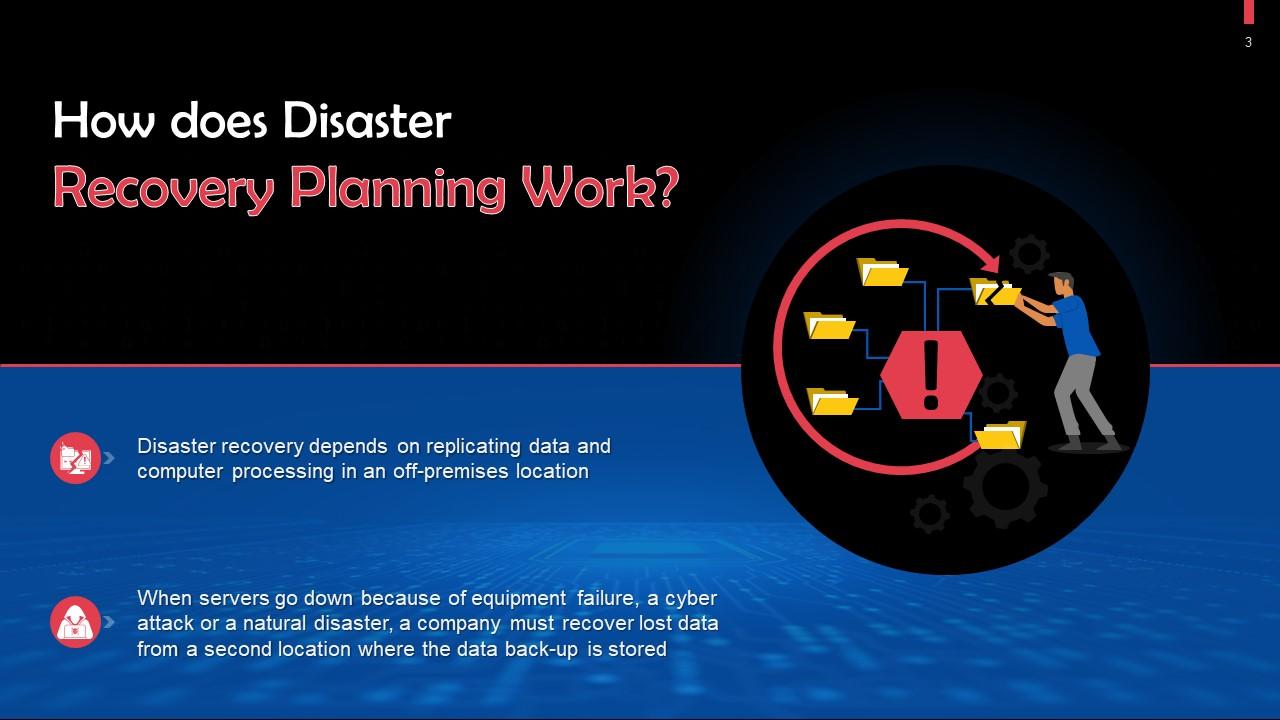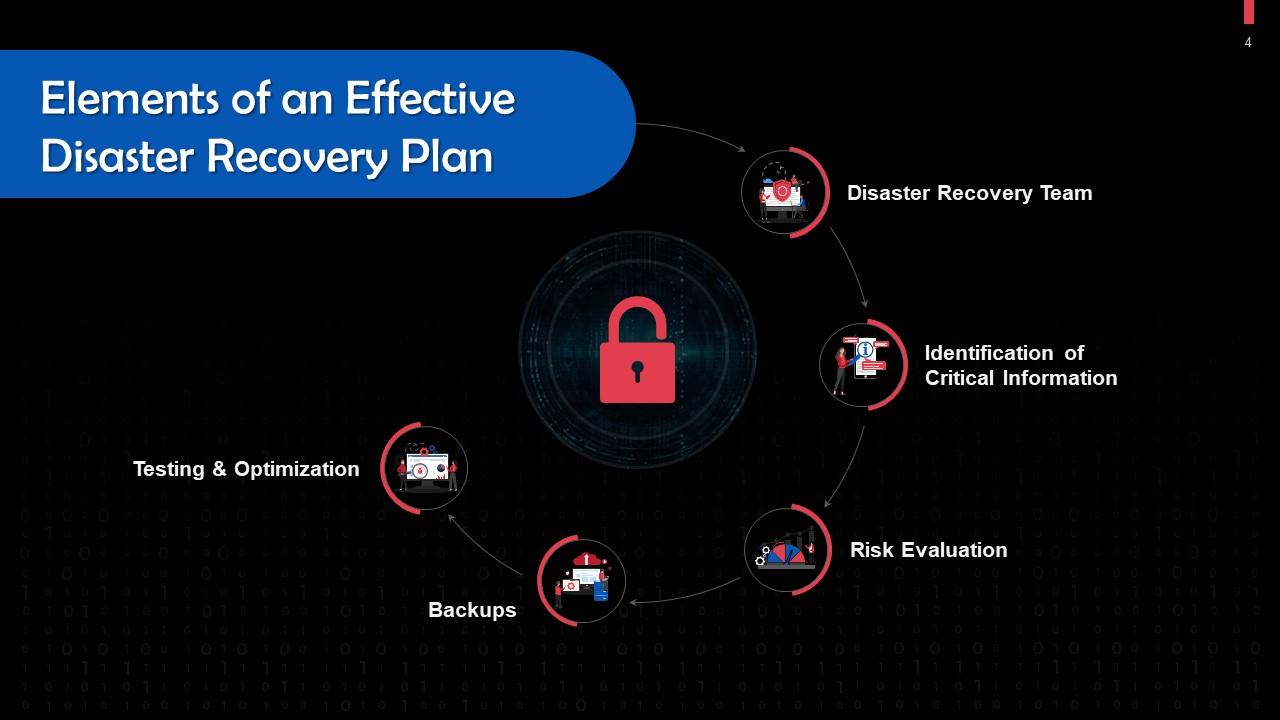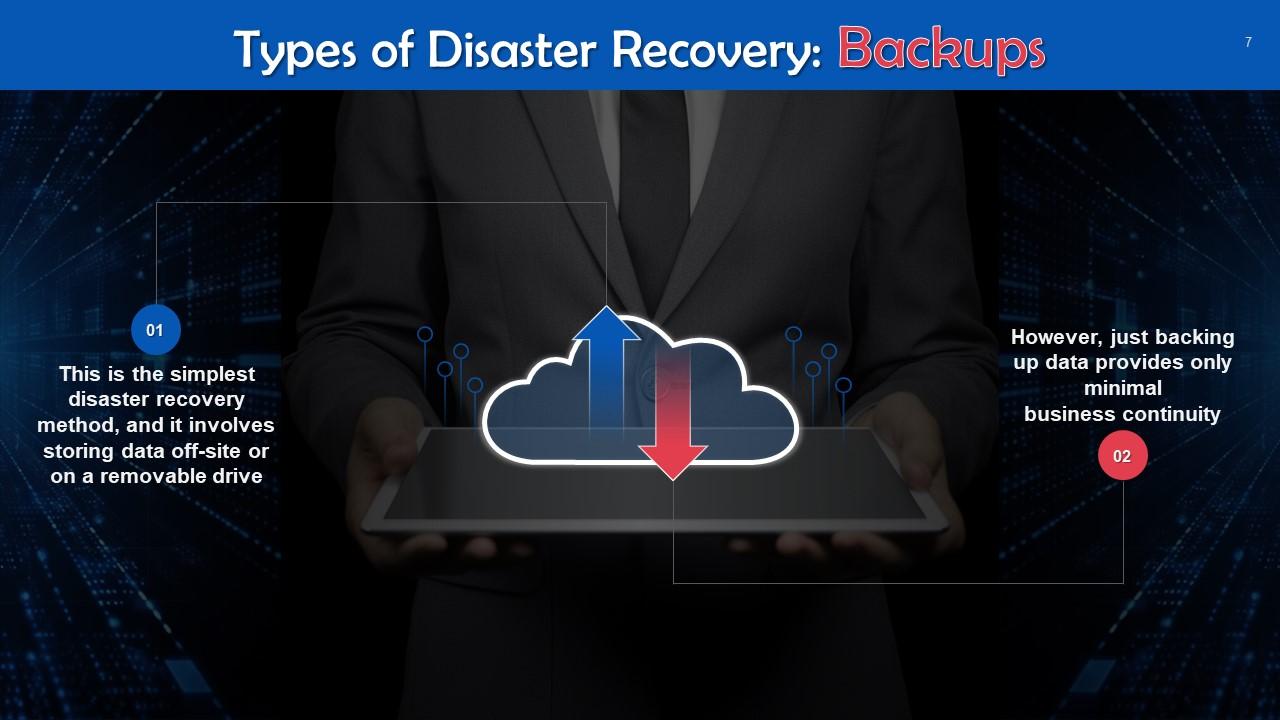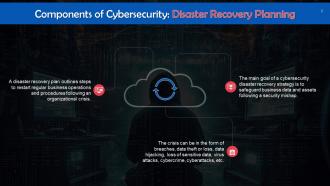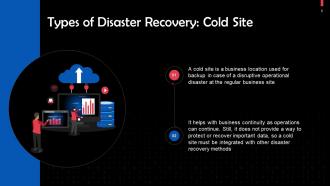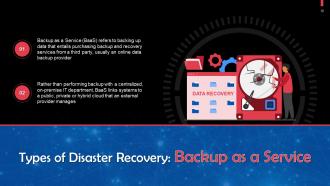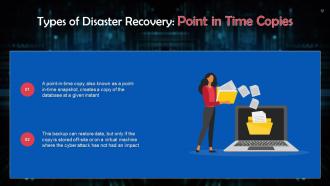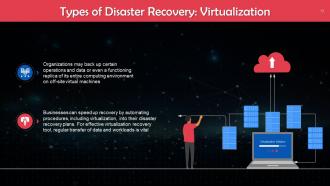Disaster Recovery Planning A Cybersecurity Component Training Ppt
This set of slides, in detail, explains the concept of disaster recovery planning, a component of cybersecurity. It covers its elements, types, and steps to build an effective disaster recovery plan.
This set of slides, in detail, explains the concept of disaster recovery planning, a component of cybersecurity. It covers ..
- Google Slides is a new FREE Presentation software from Google.
- All our content is 100% compatible with Google Slides.
- Just download our designs, and upload them to Google Slides and they will work automatically.
- Amaze your audience with SlideTeam and Google Slides.
-
Want Changes to This PPT Slide? Check out our Presentation Design Services
- WideScreen Aspect ratio is becoming a very popular format. When you download this product, the downloaded ZIP will contain this product in both standard and widescreen format.
-

- Some older products that we have may only be in standard format, but they can easily be converted to widescreen.
- To do this, please open the SlideTeam product in Powerpoint, and go to
- Design ( On the top bar) -> Page Setup -> and select "On-screen Show (16:9)” in the drop down for "Slides Sized for".
- The slide or theme will change to widescreen, and all graphics will adjust automatically. You can similarly convert our content to any other desired screen aspect ratio.
Compatible With Google Slides

Get This In WideScreen
You must be logged in to download this presentation.
PowerPoint presentation slides
Presenting Disaster Recovery Planning a Cybersecurity Component. These slides are 100 percent made in PowerPoint and are compatible with all screen types and monitors. They also support Google Slides. Premium Customer Support available. Suitable for use by managers, employees, and organizations. These slides are easily customizable. You can edit the color, text, icon, and font size to suit your requirements.
People who downloaded this PowerPoint presentation also viewed the following :
Content of this Powerpoint Presentation
Slide 2
This slide gives information about disaster recovery planning. A disaster recovery plan outlines the steps to restart regular business operations and procedures following an organizational crisis.
Slide 3
This slide gives an overview of the working of Disaster Recovery Planning. Disaster recovery depends on replicating data and computer processing in an off-premises location.
Slide 4
This slide lists important elements in an effective disaster recovery plan. These are: Disaster recovery team, identification of critical information, risk evaluation, backups, and testing & optimization.
Instructor’s Notes:
- Disaster Recovery Team: A designated team of experts should develop, implement, and manage the disaster recovery plan. The roles and duties of each team member should be specified. The team must be able to communicate with one another, staff members, vendors, and clients in case of a cyberattack
- Identification of Critical Information: A solid disaster recovery plan outlines the systems, applications, data, and other resources that are most important for maintaining company operations. The plan also documents measures that must be taken to recover data
- Risk Evaluation: Analyze any potential risks to your organization. Plan the steps and resources necessary to restore operations based on the type of incident
- Backups: Determine what needs a backup, who should perform backups, and how these should be implemented. Include a Recovery Point Objective (RPO) that specifies the frequency of backups along with a Recovery Time Objective (RTO) that states the maximum permissible downtime permitted after a security breach
- Testing & Optimization: The recovery team should regularly evaluate its strategy to address ever-evolving threats and business needs. In planning how to respond to a cyber attack, it’s critical that organizations test and optimize their security and data protection strategies
Slide 5
This slide discusses the building of a disaster recovery plan. This includes, crisis management, business continuity, impact assessment & recovery, and IT applications.
Slide 6
This slide lists types of disaster recovery. These are backups, hot sites, cold sites, backup as a service, disaster recovery as a service (DRaaS), point in time copies, virtualization, instant recovery.
Slide 7
This slide talks about backups as a type of disaster recovery. This is the simplest disaster recovery method, and it involves storing data off-site or on a removable drive.
Slide 8
This slide gives information about cold sites that help in disaster recovery. A cold site is a business location used for backup in case of a disruptive operational disaster at the regular business site.
Slide 9
This slide talks about hot site as a type of disaster recovery. A hot site maintains up-to-date copies of data at all times
Slide 10
This slide talks about Backup as a Service for disaster recovery. Backup as a Service (BaaS) refers to backing up data that entails purchasing backup and recovery services from a third party, usually an online data backup provider.
Slide 11
This slide gives information about Disaster Recovery as a Service (DRaaS). In case of a disaster or cyberattack, a DRaaS provider shifts an organization’s computer processing to its cloud infrastructure, allowing a business to continue operations without disruption, even if its servers are down.
Slide 12
This slide talks about point in time copies as a type of disaster recovery. A point-in-time copy, also known as a point-in-time snapshot, creates a copy of the database at a given instant.
Slide 13
This slide gives information about virtualization that helps in disaster recovery. Organizations may back up certain operations and data or even a functioning replica of its entire computing environment on off-site virtual machines.
Slide 14
This slide talks about instant recovery as a type of disaster recovery. Instant recovery creates a snapshot of the entire virtual machine rather than replicating a database.
Disaster Recovery Planning A Cybersecurity Component Training Ppt with all 34 slides:
Use our Disaster Recovery Planning A Cybersecurity Component Training Ppt to effectively help you save your valuable time. They are readymade to fit into any presentation structure.
-
The way SlideTeam professionals work is exceptional. Thanks for being so helpful!
-
SlideTeam is the way to go when you are in a time crunch. Their templates have saved me many times in the past three months.




